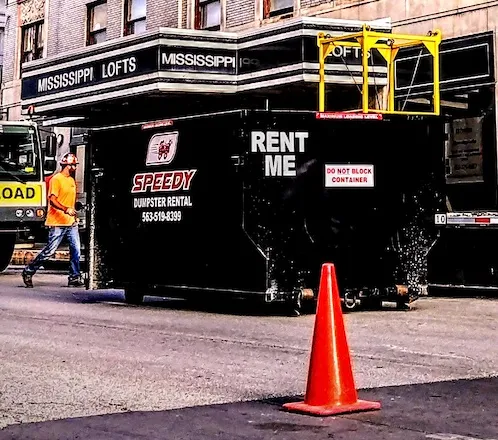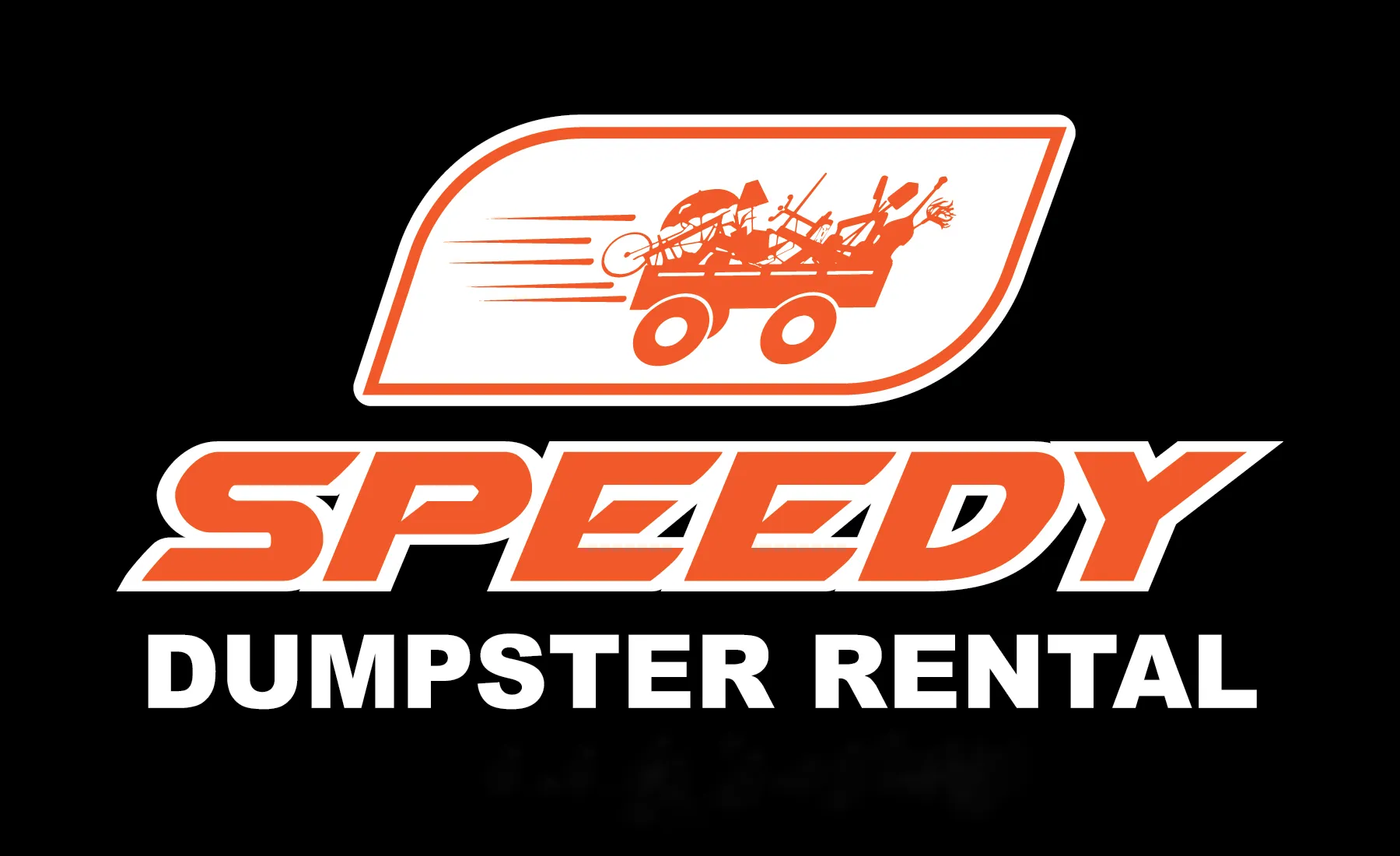OFFICE HOURS
Monday - Sunday: 7:00 AM - 7:30 PM

Construction Dumpster
Simplify your construction site cleanup with our durable, large-capacity dumpsters. Speedy Dumpster Rental LLC ensures fast delivery, easy loading, and reliable pickup for efficient debris removal.
Construction Dumpster
An effective construction dumpster strategy reduces downtime, controls costs, and keeps job sites safer and more efficient. For contractors, general contractors, and site managers, choosing the right construction dumpster service means matching container sizes and load types to each phase of work, coordinating deliveries and pick-ups for phased projects, complying with local permits and regulations, and maximizing recycling to cut disposal costs.
Common construction dumpster types and typical uses
Construction dumpsters come in a range of sizes and configurations tailored for different job-site debris:
- 10-15 yard roll-off: Best for small remodels, interior demo, and light finish-phase debris (trim, drywall, cartons).
- 20-30 yard roll-off: Standard for residential tear-outs, small new builds, and mixed-material loads.
- Compactor or front-load containers: Useful for ongoing site waste where compaction reduces hauling frequency.
- Flatbed or open-top bins: For bulky items that require crane loading or uneven materials.
Load types commonly addressed:
- Clean wood and lumber
- Metal and scrap
- Concrete, brick, asphalt, and masonry
- Mixed construction debris (drywall, insulation, packaging)
- Roofing materials (shingles, underlayment)
- Landscape and green waste (separate handling recommended)
Matching container size and load type to project phase
Selecting the right dumpster early prevents costly overages and schedule impacts. Common planning practices:
- Estimate volumes by phase: demolition, structural, rough-in, and finish. Demolition and structural phases usually need larger, heavier-capacity containers.
- Anticipate heavier loads when concrete, brick, or roofing materials are involved. These loads often have lower cubic capacity due to weight limits.
- Plan for mixed loads versus source-separated streams. Mixed loads can be cheaper operationally but raise landfill costs and limit recycling.
Scheduling for phased projects
Phased projects require predictable delivery windows, swap-outs, and contingency options:
- Set recurring pickup and swap schedules aligned with milestone completions (e.g., after demo, after framing, before finish).
- Use staging plans with alternate placement spots for swap-outs to avoid rework or double handling.
- Reserve short-notice swap options for unanticipated overages, weather-related delays, or accelerated timelines.
- Note seasonal considerations such as freeze-thaw cycles or rainy seasons that can affect access and ground conditions.
On-site placement and safety considerations
Safe placement reduces risk to workers, protects equipment, and ensures compliance:
- Position dumpsters near the work area but away from high-traffic walkways, egress routes, and emergency access lanes.
- Protect surfaces with timber or steel plates if placing on asphalt, finished concrete, or soft ground. This limits damage and avoids repair liabilities.
- Ensure a level, stable surface for the roll-off bed for safe loading and removal.
- Maintain clearances required for trucks to approach and depart. Consider turning radius and overhead obstructions.
- Use signage and barriers to prevent unauthorized dumping; secure lids when applicable to prevent wind-blown debris and reduce fire risk.
- Adhere to load heights and weight limits; do not overload or exceed sideboard heights.
Debris sorting, recycling options, and cost control
Recycling reduces landfill fees and often recovers value from materials:
- Separate metal, clean concrete, asphalt, and recyclable wood where possible. These streams are commonly accepted by local recycling processors and may reduce disposal costs.
- Keep hazardous materials and contaminated soils out of construction dumpsters. Paints, solvents, asbestos-containing materials, and certain adhesives require specialized handling and manifests.
- Implement on-site sorting stations or temporary bins to divert high-value recyclables from mixed waste.
- Document recycling weights and disposal manifests for project records and green building certifications.
Permits, city regulations, and documentation
Construction dumpster placement often intersects with municipal rules:
- Street or curbside placement typically requires a right-of-way or curbside permit from the city or county. Lead times vary by jurisdiction.
- Permits may require proof of insurance, site plans showing placement, and dates for placement and removal.
- Historic districts and HOA areas often have additional restrictions on visibility and timing.
- Weight limits on local roads can restrict where heavy, concrete-laden containers are placed and transported.
- Keep copies of permits, disposal receipts, and manifests on file to demonstrate compliance and for billing audits.
Best practices for contractors managing multiple deliveries and pickups
Efficient logistics reduce downtime and administrative overhead:
- Maintain a project calendar that lists delivery windows, pickup dates, and phase-dependent swap-outs for each site.
- Label containers by phase or material (e.g., “Roofing Shingles,” “Clean Concrete”) to avoid contamination and simplify pickups.
- Use standardized site maps that indicate preferred placement, truck approach, and any access constraints for drivers.
- Build buffer days into schedules for permit delays, weather, and truck availability.
- Capture before-and-after photos for each delivery and collection to resolve disputes and support billing.
- Coordinate with subcontractors to keep loading practices consistent (no prohibited items, load heights respected).
- Consider consolidated pickups for multiple small jobs in the same neighborhood to reduce cost and environmental impact.
Prohibited items and hazardous waste handling
Construction dumpsters are not suitable for all materials. Commonly prohibited items include:
- Asbestos or materials that may contain asbestos
- Petroleum-contaminated soils and large quantities of paints or solvents
- Pressurized cylinders and certain batteries
- Chemical waste and certain adhesives
For these items, arrange separate hazardous waste disposal with licensed handlers and ensure manifests and certifications are retained.
Final considerations: risk reduction and efficiency gains
Effective construction dumpster planning protects schedules, improves site safety, and trims disposal costs. Prioritize accurate sizing by phase, proactive permit management, clear on-site placement and safety practices, and robust debris sorting and recycling. For contractors managing multiple sites, consistent processes for scheduling, labeling, and documentation turn waste management from a reactive task into a predictable part of project delivery.

SERVICE AREAS
We proudly provide dumpster rental services to Davenport, IA and the surrounding communities.

